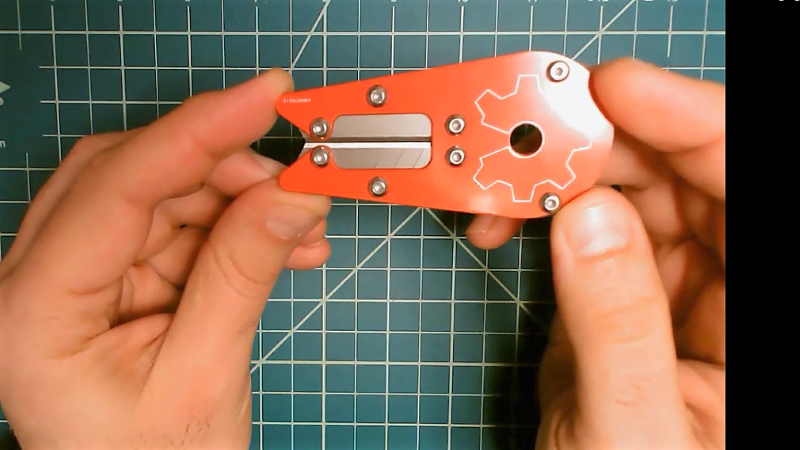The rise in cheap PCB fabrication has made old-school prototyping methods such as wire wrapping somewhat passé, but it still has its place. And if you’re going to wire wrap, you’re going to want a quick and easy way to strip that fine Kynar-insulated wire. So why not use PCB material to make this handy wire-wrapping wire stripper?
The tool that [danielrp] built is pretty simple – just a pair of razor blades held together so as to form a narrow slot to cut insulation while leaving the conductor untouched. The body of the tool is formed of two PCBs, between which the blades are sandwiched. [danielrp] designed the outline of the PCBs in DraftSight, then exported a DXF into EAGLE to make the Gerbers. The fabricated boards needed a little post-processing, including tapping the holes on one side to accept the screws that hold the tool together. We were surprised that FR4 took the threads at all, but it seems to work for this low-torque application. The disposable snap-type blades were sandwiched between the PCBs and the gap between them adjusted for nick-free stripping. The video below shows the design and build process.
We always appreciate homemade tools, and the fact that you can get a stack of PCBs for almost nothing makes us wonder what else we could use them for. We recently saw them used in a unique word clock, and even turned into a folding circuit sculpture.
















Radial != Rotary
Of course, all my wire wrap tools have integrated strippers already. I can’t see myself reaching for another tool when one that works great is already in my hand.
But neat project, nonetheless.
Personally prefer Thermal Wire Strippers as they are less likely to nick the conductor.
;-)
Zippo or Ronson?
Camp fire :)
Still safer than some methods I’v seen…
Don’t try this at home… ha ha…
https://www.youtube.com/watch?v=EbHFtX_KtbE
Dear Lord…
Interesting design, nicely executed, cool project.
But… I think I’m missing something, as I don’t understand how the wire (core) “knows” not to touch the blades? As the “sliding the wire into the stripper” movement still makes it possible to partially cut the conductor without really noticing it, resulting in a partially damaged wire that breaks more easily during use later on.
Please correct me if I’m wrong
You’re not wrong.
Hi, I am the author. You are right, the conductor can be damaged while the wire is sliding through the blades. I guess sanding the blades, made them a little bit blunt, could help with this problem. Also, this could make them perfectly straight, these cheap blades are not super straight perse. BTW I´ve been using the stripper my self, and also I made another two for some friends, and everybody is happy so far.
The first thing that occurred to me was to have the PCB extend past the end of the blades and have the PCB gap be the same as the thickness of the insulation. That way, the wire is perfectly centered before it gets to the blades. Also, I would only use shorter piece of blade, so that you could continue to push it through, then pull it the wire out after it has gone through the blades. (When spacing the blades, I would use the bare wire + a thin piece of paper between the blade to make sure that they never come in contact; the tiny amount of plastic left would be easy to overcome with your fingernails. Lastly, I would make it shorter, with a flat back edge and a couple of holes in the corners, so it could be mounted vertically onto something that was stable, so I could just press the wires down into it without needing to hold it.
That being said, it is a REALLY useful looking tool, and I intend to make my own (3d printed) version. Thanks for the idea!
It is very portable wire stripper. I can easily carry this in my pocket.